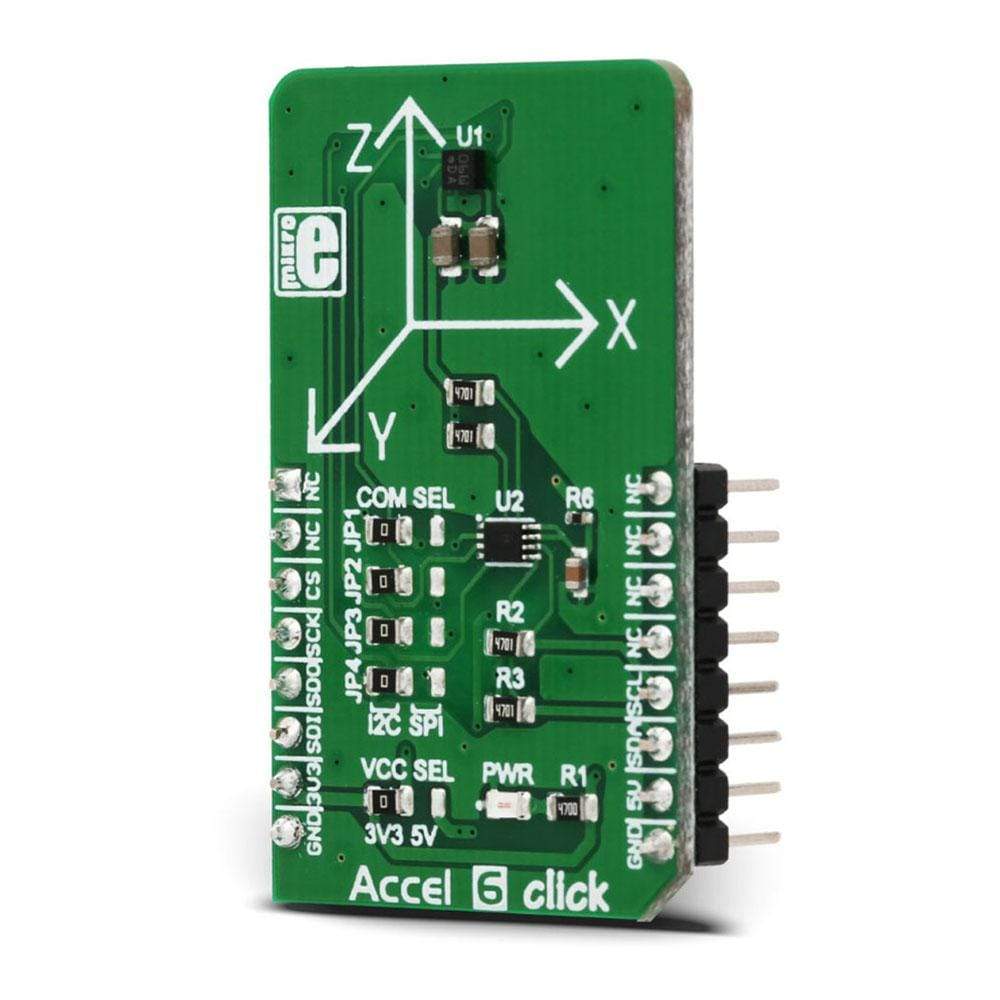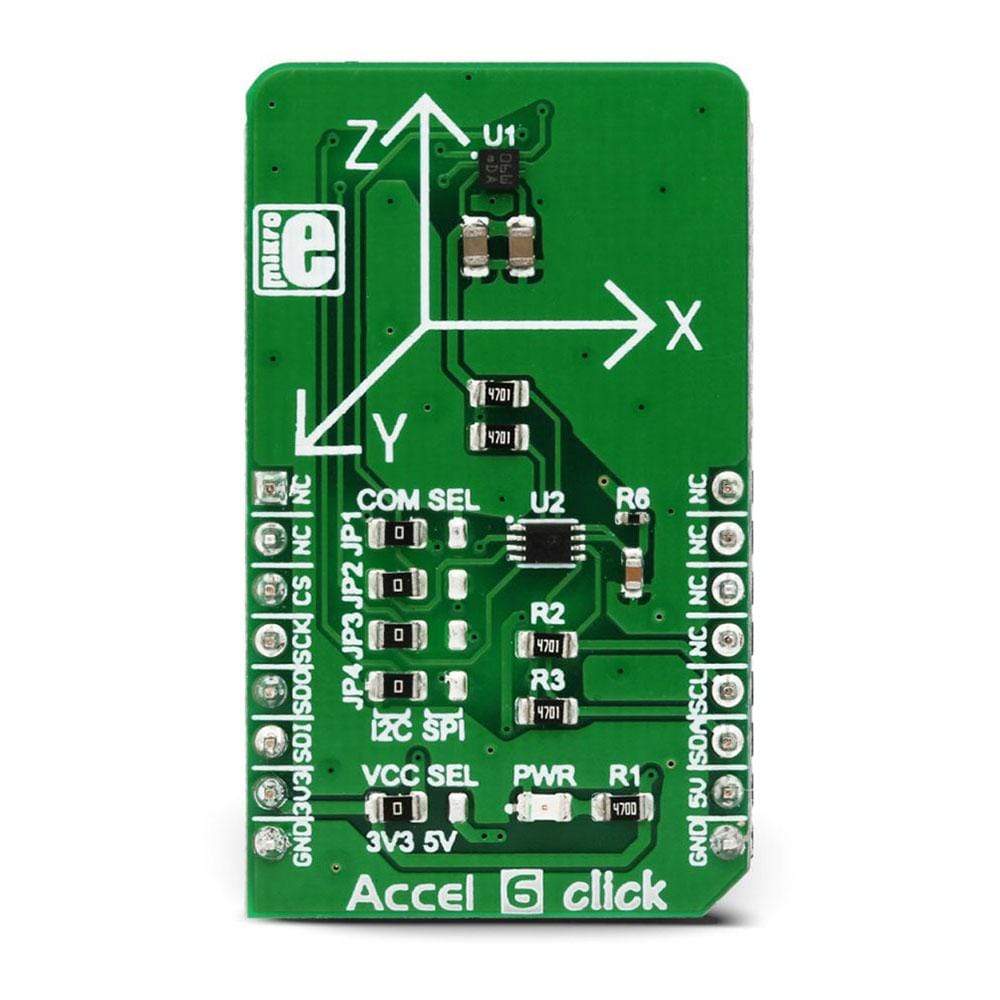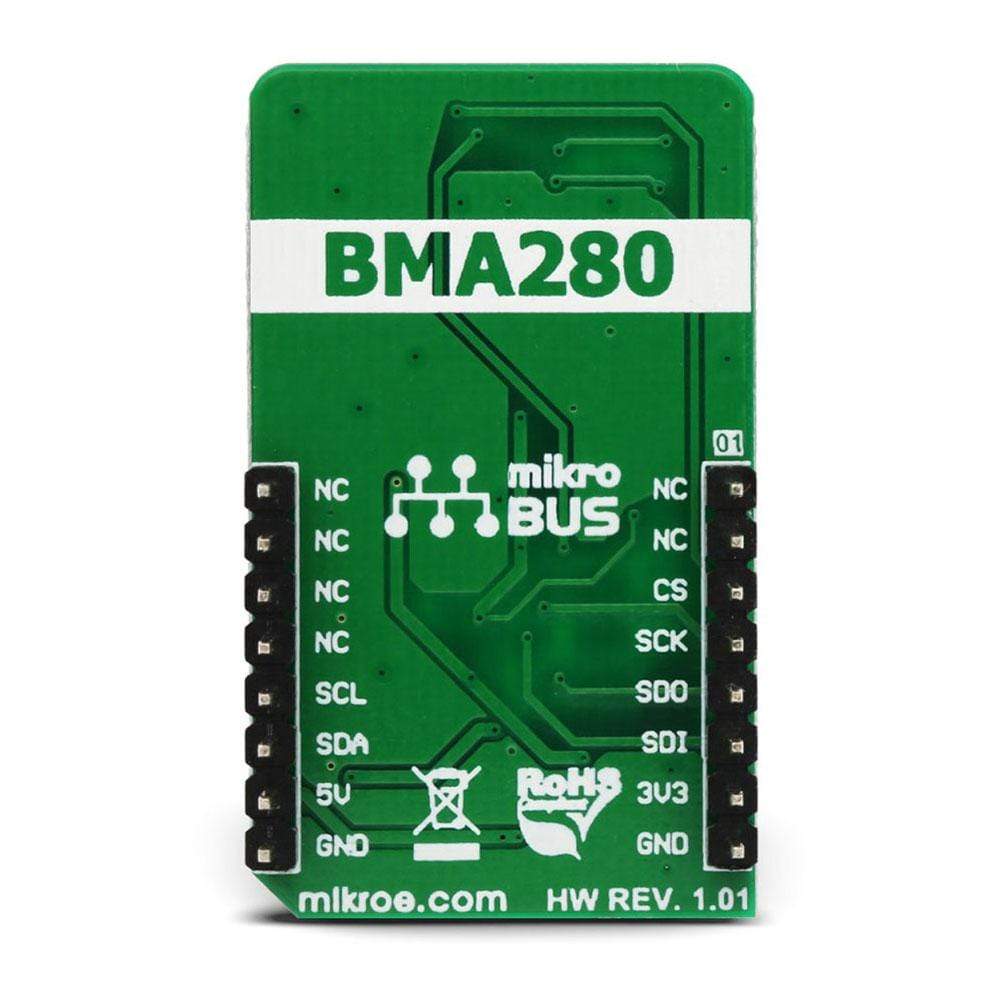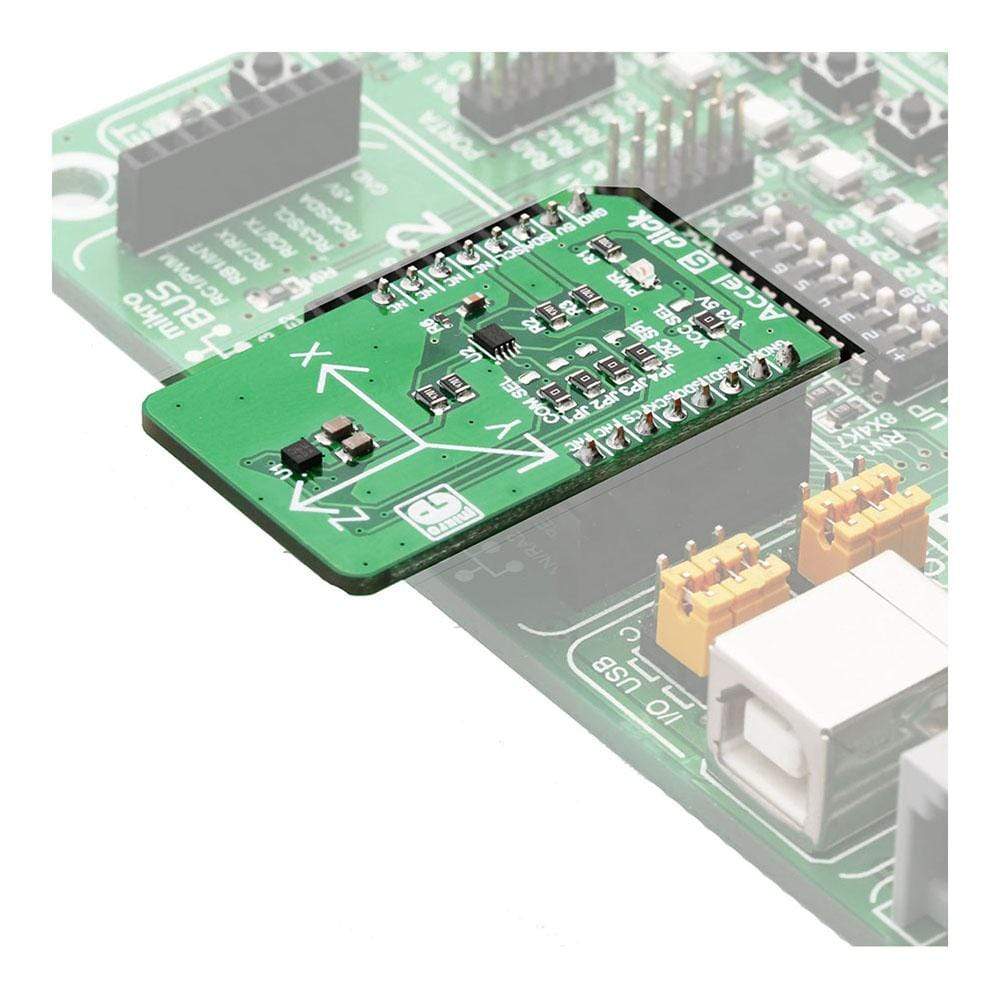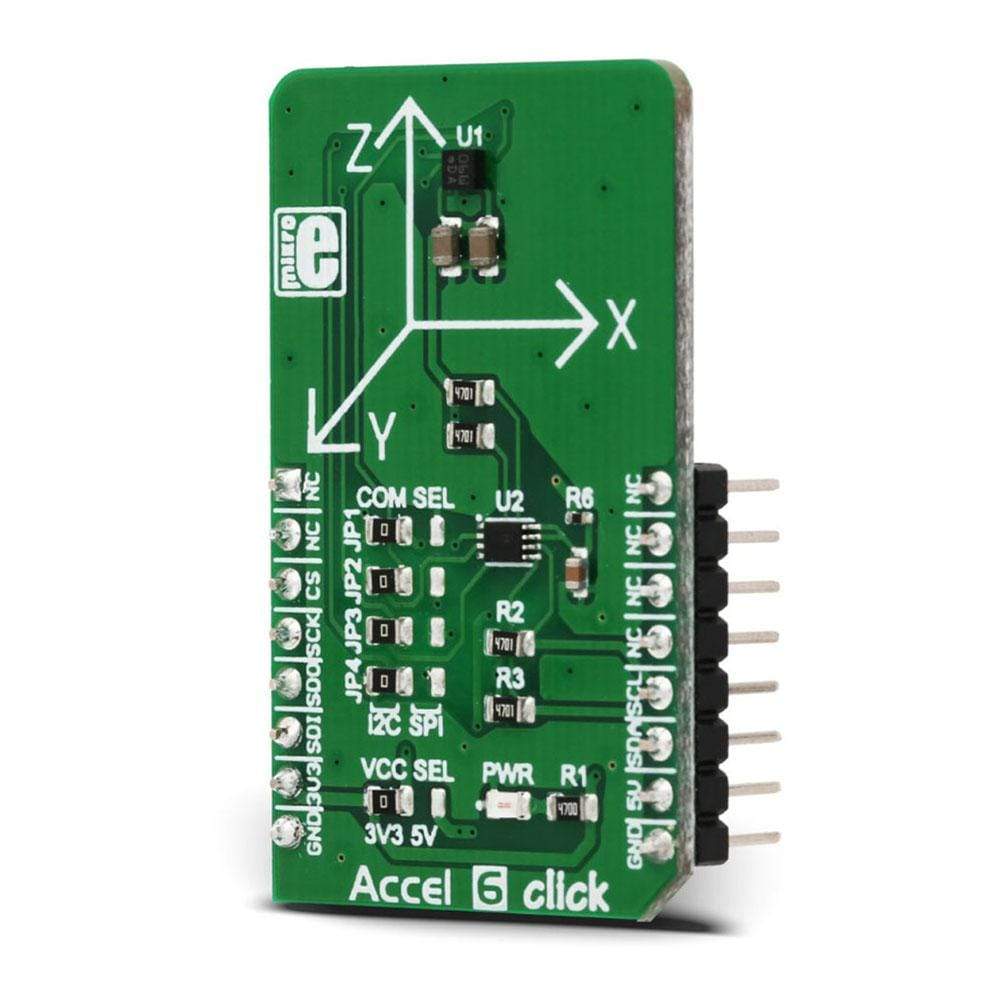
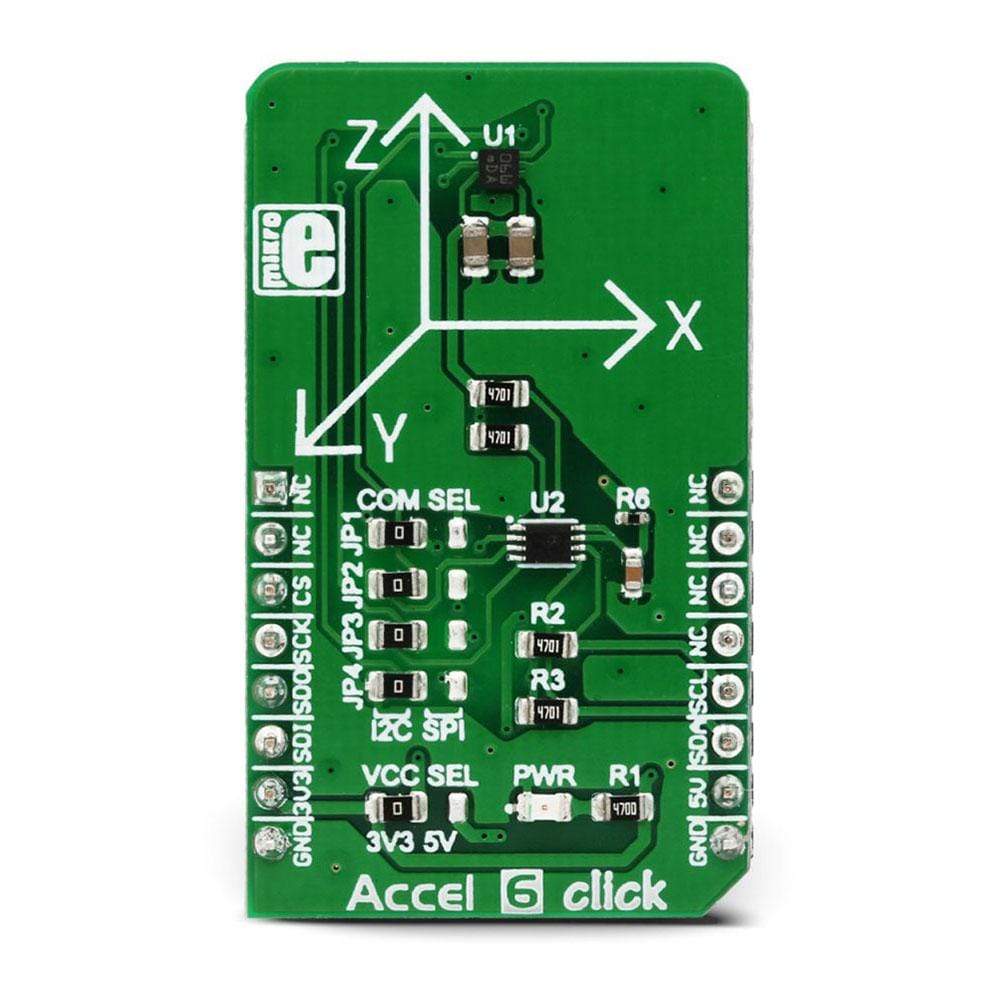
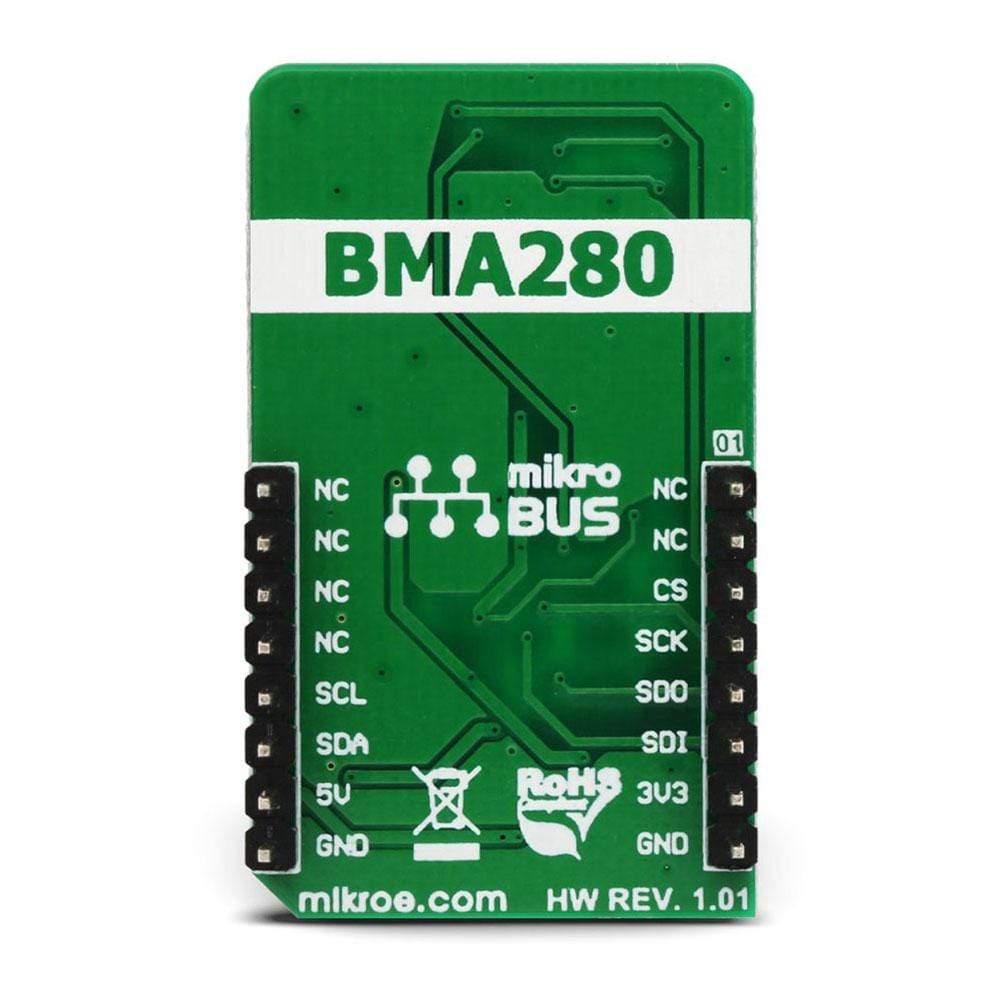
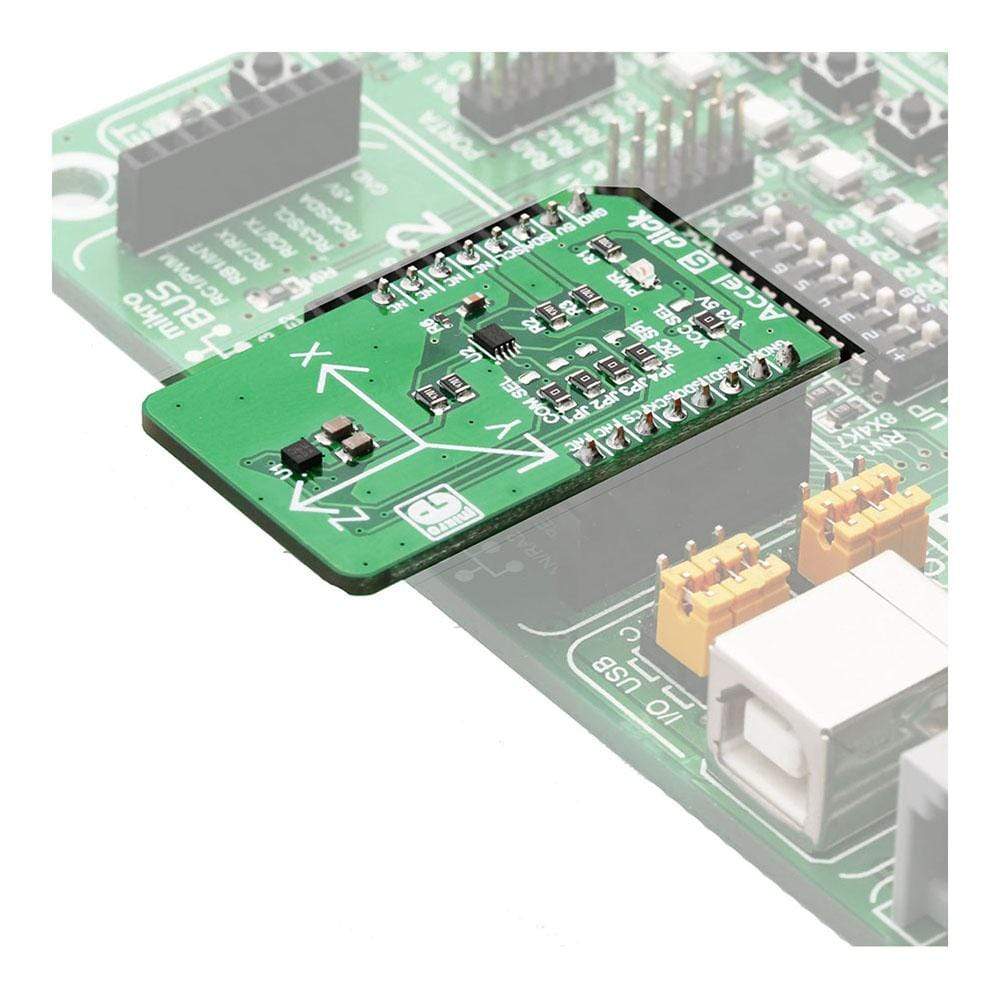
Overview
The Accel 6 Click Board™ is a three-axis acceleration sensor with many features. It uses the BMA280, a 14-bit triaxial acceleration sensor with an intelligent on-chip motion-triggered interrupt controller, from Bosch Sensortec. This sensor has an advanced set of features, that allows easy acceleration measurement in three perpendicular axes for up to ±16g, with selectable max range steps for increased accuracy.
Using a low-pass filter allows filtering of the abrupt changes in acceleration readings. FIFO buffer ensures reliable and fast data delivery. Intelligent interrupt engine allows detection of motion, inactivity, shock vibration, new data arrival, and more.
Downloads
L' Accel 6 Click Board™ est un capteur d'accélération à trois axes doté de nombreuses fonctionnalités. Il utilise le BMA280, un capteur d'accélération triaxial 14 bits avec un contrôleur d'interruption intelligent à déclenchement par mouvement intégré, de Bosch Sensortec. Ce capteur dispose d'un ensemble de fonctionnalités avancées, qui permettent une mesure facile de l'accélération sur trois axes perpendiculaires jusqu'à ±16 g, avec des pas de plage maximale sélectionnables pour une précision accrue.
L'utilisation d'un filtre passe-bas permet de filtrer les changements brusques dans les mesures d'accélération. Le tampon FIFO garantit une transmission fiable et rapide des données. Le moteur d'interruption intelligent permet de détecter les mouvements, l'inactivité, les vibrations de choc, l'arrivée de nouvelles données, etc.
| General Information | |
|---|---|
Part Number (SKU) |
MIKROE-3075
|
Manufacturer |
|
| Physical and Mechanical | |
Weight |
0.019 kg
|
| Other | |
Country of Origin |
|
HS Code Customs Tariff code
|
|
EAN |
8606018713189
|
Warranty |
|
Frequently Asked Questions
Have a Question?
Be the first to ask a question about this.

